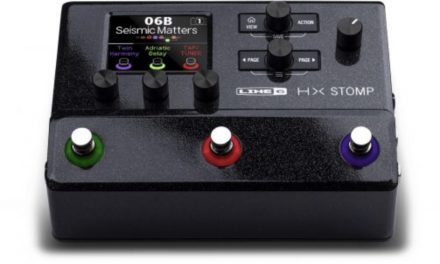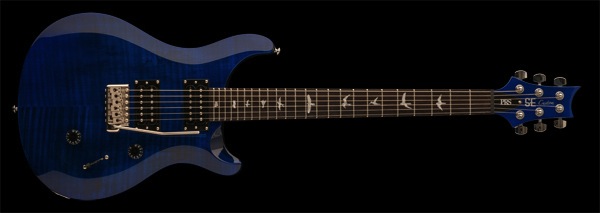I’m a fan of Wampler Pedals. I’m also a fan of Brian Wampler, who is a down to earth guy that I’ve talked to a few times over email. And for a while now, Brian has been preaching the gospel of IR files. I’ve always been a little interested in them, but when I got my HX Stomp, I started really digging in. You see, the Helix family of Line 6 products (from the Helix down to the Pod Go) can load IR files, and the IR file is basically the sound of a modeled cabinet, the way it’s used by Line 6. So? So in addition to buying IR files that are better than the files included in the HX Stomp/Pod Go, you can also make your own (if you are a bit of a computer nerd. Again, so?
Think of it like this. You could over-simply an IR file and say it’s like a 1,000 band parametric EQ. But instead of knobs or sliders, software adjusts all of the values. If you are a person who has a BOSS eq pedal on your pedalboard, you can start to understand what this means. It means we’ve only scratched the surface to what IR files can do. We think of IR files as modeling a cabinet, and we understand that they can model the mic or microphones and the room, too. But it goes beyond that.
Last night, I recorded my Gibson Les Paul through my Fender Bassbreaker 15 tube amp, into a Orange one by 12 cabinet with a Celestion Vintage 30 speaker, using a Shure SM 57 microphone. Very typical recording setup for me. The amp was set to a crunch tone – think 70’s rock. I recorded a guitar part. Then I connected my PRS S2 Satin 24, same pickup (the beloved Pearly Gates), and recorded the same guitar part through my HX Stomp. I wanted to compare the two, to see with the EQ looked like using a spectrum analyzer. Compared to the real amp, the HX Stomp sounded thin and a bit fizzy. Helix amps are, in my opinion, a little tricky to dial in. I wanted to use the Stomp’s parametric eq to try to make it sound more like the tube amp. I got a little closer, but it was hard, and I wasn’t satisfied.
Then I remembered Logic’s “Match EQ” plugin. I’ve never used it, but now was a good time to start. I found some good videos online on how to use it, and I matched the EQ from the tube amp to the Stomp. And HOLY SHIT. It got 90% of the sound. It was remarkable!
That’s great for recording. But what about for my live rig? Could I somehow make an IR file out of the eq curve created by the Match EQ plugin? And that’s where our story ends, because I haven’t tried that step yet. But I’m very excited about the possibility. It is possible to do so. Man, here is where I wish the HX Edit software was better – I wish I could have a visual representation of the parametric eq in the thing. I wish it had a spectrum analyzer like Logic does. But now I’m thinking that making an IR file, if it works, would be way better. Still, I bet with two of the Helix parametric eq’s, I could approximate what the IR file would look like. The advantage would be that you don’t have to download anything to get the sound – you’d just need screenshots of the values, AND you’d be able to tweak it. Interesting idea. I’m stoked about all of this!
If I’ve lost you in this conversation, sorry about that. I’m a computer nerd by trade. The entire point of this post is to tell you that IF you decide to buy a digital modeler, you HAVE to have the ability to load IR files, because that’s the future. IR files can radically extend what your digital modeler can do.
Side note – if you bought a cabinet simulator and connected it to your old POD, would you get a lot closer to Helix sounds than Line 6 would like you to believe? Maybe. But honestly, you might as well just buy a Pod Go, rather than drop $200 on a cab simulator.




